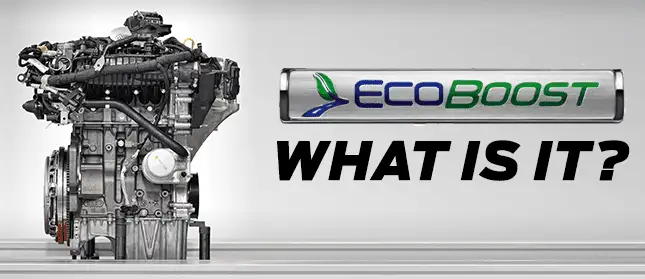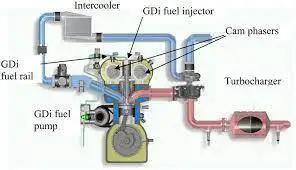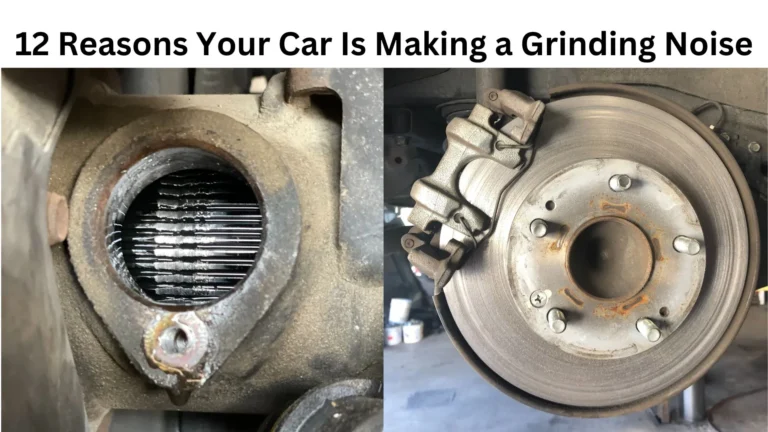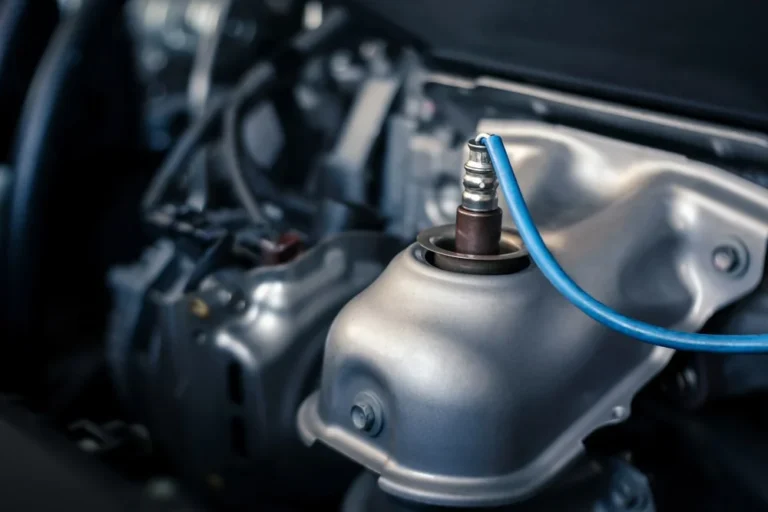If you’ve seen a Ford commercial in the last decade or so, you’ve probably heard them talk about their EcoBoost Engines. Almost all of their cars and trucks are offered with EcoBoost these days. But what does that mean? Is it just a marketing gimmick or is it something you should consider on your next vehicle?
Ford introduced EcoBoost — a system that combines Turbocharging, Tariable Talve Timing (VVT) and Direct Injection — to its Engines in 2010. The goal of the technology was to reduce Engine size without giving up Performance.
 |
| Ford EcoBoost System |
Today, stricter emissions standards force the auto industry to focus on downsizing to improve efficiency. As such, Ford has ramped up its use of EcoBoost, applying it to nearly its entire vehicle lineup.
Technical tidbits
If terms like Turbocharging, VVT and direct injection are just as confusing as the phrase EcoBoost, here’s how the technology breaks down.
Turbocharging
Turbochargers have long been used to improve performance, especially on smaller engines. Basically, the technology uses spent exhaust gases to turn a set of wheels that force pressurized air into the engine. This extra air (and matching fuel) helps to improve the efficiency of the engine, and can make a smaller engine more powerful.
Variable Valve Timing
Air and Exhaust enter and leave an Engine through a set of valves. Each valve rides on a part of the Camshaft inside the engine. Variable Valve Timing — otherwise known as Variable Camshaft Timing — is used to precisely control these valves.
The latest version of EcoBoost uses what Ford calls Twin-independent Variable Camshaft Timing (Ti-VCT). This system uses a computer-controlled solenoid to send pressurized Oil to actuators on the end of the camshaft, causing the shaft’s position to shift exactly when needed. The result is improved engine response and greater efficiency.
 |
| Direct Injection And Turbocharging |
Direct Fuel Injection
Traditional Fuel-Injected Engines use a delivery method called Port Injection. With this design, gas is squirted into an intake port before entering the engine. EcoBoost, on the other hand, typically injects fuel directly into the combustion chamber, hence the term Direct Fuel Injection. This method improves efficiency while also helping maximize power.
Some newer EcoBoost Engines, though, use a combination of port and Direct Injection, called “Port Fuel and Direct Injection.” The design uses two injectors per cylinder: one inside the intake port and another inside the combustion chamber.
Is EcoBoost worth getting?
The answer all depends on your driving needs. In most cases, EcoBoost is more expensive than selecting a traditional engine. Also, because the system includes the added complexity of a Turbocharger, it can run into more complicated Mechanical Issues.
The upside is an increase in performance without a loss in Fuel mileage. So if you want a more powerful ride without additional impact on the environment, EcoBoost can be a good option.
If you’re serious about getting a Ford vehicle, test drive both the traditional model and the EcoBoost variant. See which one is right for your lifestyle and your budget.
| 2.3 Liter Ford EcoBoost Engine |



